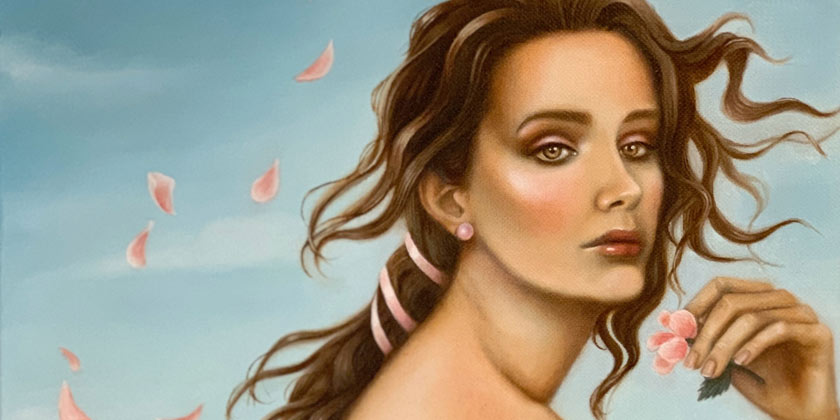Artwork by Jasmin, Old Masters Academy student
Dear Natalie and Vladimir,
I signed up for the Old Masters Academy course when it first launched, but only recently found the courage and inspiration to pick up my paintbrush again and put what I learned from you to practice.
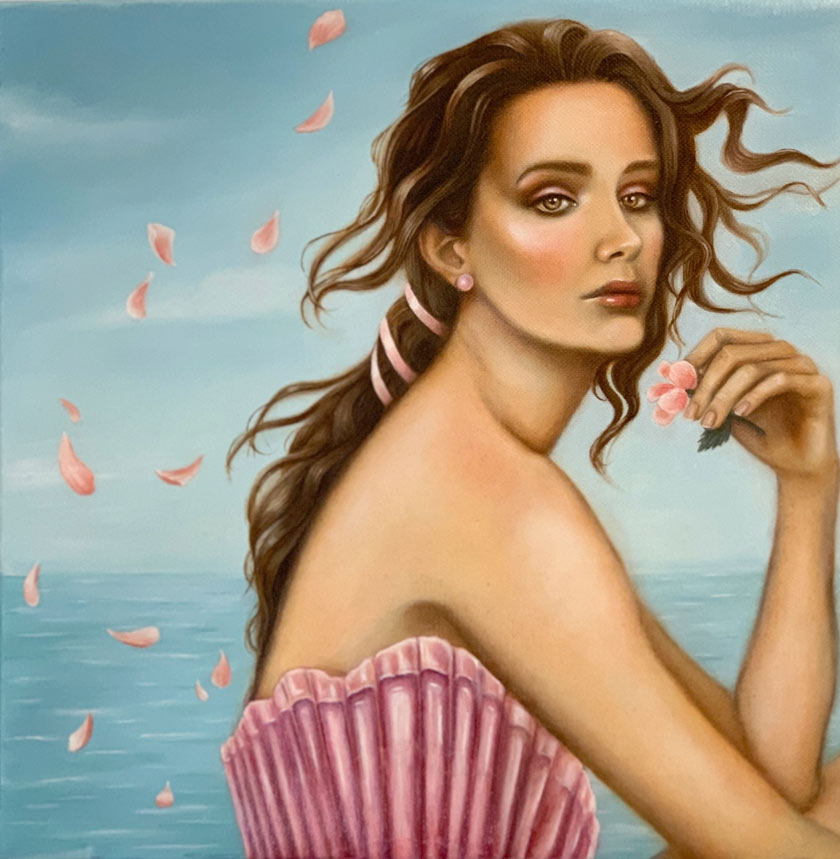
This is what I’ve been working on. I would really appreciate it if you could share your opinion with me. I’d love to improve and pinpoint what I need to work on.
Thank you in advance!
Be blessed!
Jasmin
Feedback from Natalie Richy, Old Masters Academy tutor
Dear Jasmin,
Thank you very much for your wonderful portrait painting. I really like your artwork, it is original and creative, the composition is interesting and balanced, and colors are fresh and calm at the same time.
It was probably your intention to compose this artwork the way you did – shifting the figure to the right, giving more margin on the left hand side. This bring certain emotions to this portrait as if a model was focusing on something else and then decided to have a look on a viewer.
Talking about the model, she has a beautiful face and correct proportions. At the same time, there is a room for improvement. It might be difficult to notice, but the model’s face is not symmetrical and her left eye is not in place. The same can be mentioned about the bridge of the nose. This discrepancy is very small, and gives the feeling that something is not quite right; but without strong constructive drawing skills a viewer might not see what exactly is off.
The way to improve your portrait drawing skills is to work on the facial planes and head’s anatomy and construction. Please see the drawing by Vladimir London below. This artwork explains how a head can be simplified with geometric planes and how it connects to the neck and body.
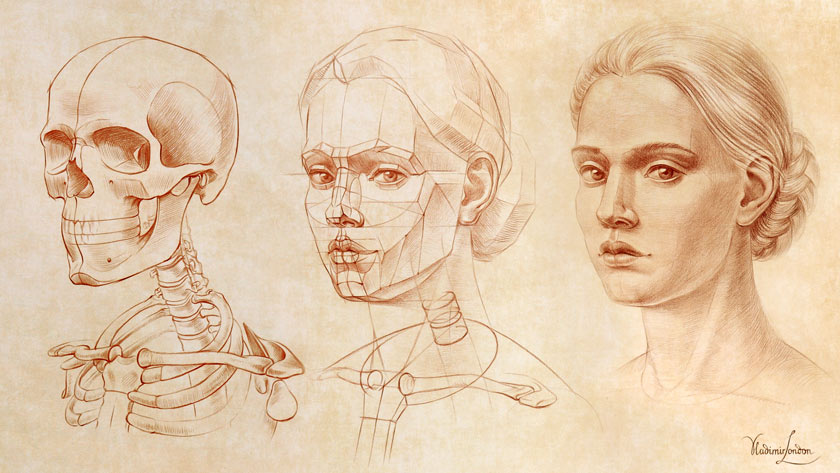
When drawing a portrait, you can keep its plains geometry in mind and it will greatly help to ensure correct construction because geometric figures are simpler than smooth organic shapes. It doesn’t mean, however, that every time you draw a portrait, you have to depict planes; but knowing how to use them will help you to avoid constructive mistakes.
There are other very small things you may not be aware about and therefore do not see in your artwork. For example, according to the classical canon proportions, the philtrum, a vertical indentation in the middle of the upper lip, has the same height as the hight of the upper lip, which is equal to the height of the lower lip and in turn is one-third of the distance from the bottom edge of the lower lip to the bottom line of the chin. In your artwork, this groove could be a bit shorter to fit this proportion. Of course, all people are different and proportions are not set in stone. Your model might have her individual measurements that are not follow classical proportions, but I have a feeling that this artwork shows an idealised model and you, as an artist, have the full license to shape proportions as you wish.
How to draw portraits and figures from life, memory and imagination is a great topic that cannot be covered in one review. To help students like you, who already have drawing and painting skills, yet need to improve figurative drawing, we created the Life Drawing Academy course: https://lifedrawing.academy/
There are other places in your artwork that could be done differently, for example the background, but it is down to the personal choice and taste. For instance, painting the sea waves was quite a challenge for generation of artists because you either have to depict them realistically and such waves would distract attention from the figure in this composition, or stylise waves and they would become a “repetitive pattern decoration”; the same goes for the girl’s dress.
All these points are just my personal option and in no way should influence your creative decisions because every artist has a different set of preferences and views.
Once again, thank you for your beautiful painting.
I wish you all creative success you deserve.
Kind regards,
Natalie Richy
Learn time-honored oil painting techniques of the Old Masters!
What you will get:
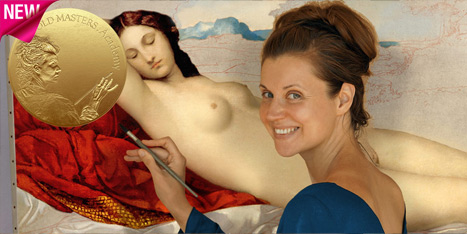
- Instant access to all 60 multi-part video lessons
- A lifetime membership
- Personal coaching by the course tutor
- Constructive critiques of your artworks
- Full access to the Art Community
- Exhibition space in the Students Gallery
- Members-only newsletters and bonuses
- Old Masters Academy™ Diploma of Excellence
How you will benefit:
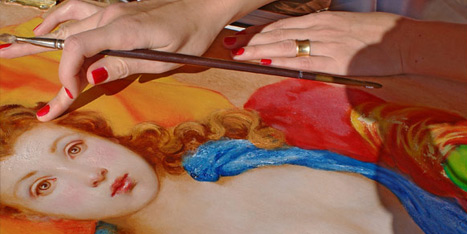
The Old Masters Academy™ course is very comprehensive, yet totally beginner friendly. All you need to do is watch video lessons one by one and use what you’ve learned in your creative projects. You will discover painting techniques of the Old Masters. This is the best art learning experience you can have without leaving your home. All information is delivered online, including personal support by the course tutor.

